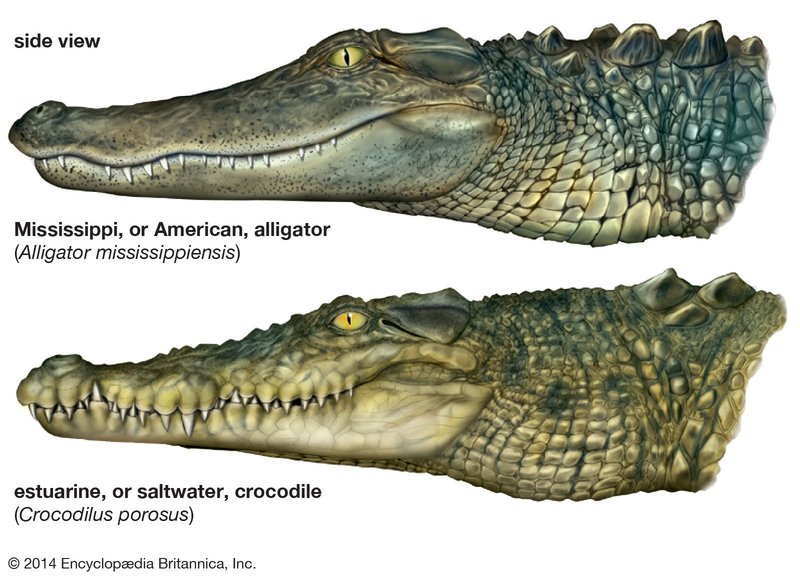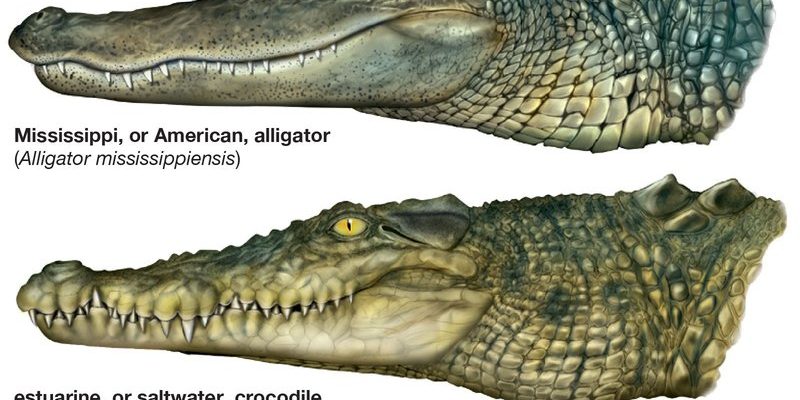
Let’s grab a coffee and dive into the evolutionary journey of the American crocodile. Imagine a time when some of its ancestors were swimming in tropical waters, long before the land we know today was even formed. As we uncover the twists and turns of its history, you’ll see how environmental changes shaped this remarkable creature into what it is today.
Origins of Crocodiles
The story of the American crocodile starts way back during the Late Cretaceous period, around 70 million years ago. That’s right—these reptiles are some of the oldest survivors on Earth! They belong to a subgroup of reptiles called archosaurs, which also includes dinosaurs and birds. Think of archosaurs as a family tree with branches that have seen plenty of growth and change.
In their early days, crocodiles weren’t just the semi-aquatic predators we know now. Some ancestors were actually land-dwelling creatures! Over millions of years, through natural selection and adaptation, some species evolved back into the water. This transition involved developing strong limbs and a streamlined body, making them excellent swimmers. Over time, they became better at hunting, leading to their success in various ecosystems.
What’s intriguing is how these ancient reptiles survived the mass extinction that wiped out the dinosaurs about 66 million years ago. While many species vanished, crocodilians adapted and thrived in their new environments. They learned to eat different types of prey and adjusted to changing climates. This ability to adapt is a big reason why the American crocodile exists today.
The Distinct Features of the American Crocodile
Now that we have a sense of the origins, let’s talk about what makes the American crocodile special. These reptiles can grow up to 13 feet in length and are usually found in coastal areas, mangroves, and freshwater habitats in the Americas. With their long, narrow snouts and powerful jaws, they are perfectly built for catching fish and other prey.
One interesting feature is their coloration. Unlike some of their darker relatives, American crocodiles sport a lighter, olive-green hue. This not only helps them blend in with their surroundings but also reflects their preference for warmer waters. Imagine the sun glistening off their scales as they bask on a riverbank—nature’s perfect camouflage!
Additionally, they have a unique adaptation that allows them to tolerate saltwater. This capability sets them apart from their close relative, the American alligator. American crocodiles possess specialized glands that help expel excess salt. It’s like having a built-in filter system! This adaptability has allowed them to expand their range, making them dominant predators in various ecosystems.
Habitat and Distribution
The American crocodile calls a few regions home, primarily found in the southeastern United States, parts of Mexico, and Central America. They thrive in warm, coastal areas where freshwater meets saltwater. Places like the Florida Everglades are prime territory for these reptiles, offering plenty of nesting sites and abundant food sources.
As we consider their habitat, it’s essential to understand the impact of environmental changes on their populations. Over the years, urbanization, pollution, and climate change have taken a toll on their habitats. The destruction of mangroves and wetlands affects not just crocodiles but countless species that rely on these ecosystems. This has raised concerns about their conservation and the future of their habitats.
In Florida, for instance, conservation efforts have been implemented to help these creatures thrive. By protecting nesting sites and restoring habitats, wildlife organizations are working hard to ensure that American crocodiles continue to play their vital role in the ecosystem. It’s a balancing act between human development and wildlife preservation.
Behavior and Diet
When it comes to behavior, American crocodiles are quite fascinating. They tend to be more social than the shy alligators. You might find them basking on the banks in groups, especially during the breeding season. This social behavior can be a survival tactic as they share information about potential threats.
In terms of diet, American crocodiles are opportunistic feeders—they eat whatever is available. Their menu typically includes fish, birds, small mammals, and even other reptiles. They’re stealthy hunters, lurking near the water’s edge and blending in with their surroundings, waiting to ambush unsuspecting prey. Picture them lying in wait like a sneaky ninja of the swamp!
Interestingly, young crocodiles have different dietary needs than adults. Hatchlings primarily feed on insects and small fish, while adults are capable of tackling larger prey. This shift in diet is crucial for their growth and survival, allowing them to adapt to their environment at different life stages.
Reproduction and Lifespan
American crocodiles have a unique approach to reproduction. Mating usually occurs during the warmer months, and afterward, the females build nests made from vegetation and mud near water sources. Women can lay between 20 to 60 eggs, depending on conditions. This is a critical period because the temperature of the nest influences the sex of the hatchlings. Warmer temperatures may produce more males, while cooler conditions lead to more females.
After about 80 days, the eggs hatch, and the little ones emerge. But here’s where it gets tricky—crocodile mothers are protective. They often help their hatchlings reach the water, showing a nurturing side not commonly associated with reptiles. They’ll even sound alarm calls to warn them of approaching danger!
The lifespan of an American crocodile can reach up to 70 years in the wild. That’s a long time to survive, and it’s a testament to their resilience. However, as with many species, their lifespan is often shortened due to threats from humans and habitat loss.
Conservation Status and Challenges
Over the years, the American crocodile faced significant threats, leading to its classification as a vulnerable species. Habitat destruction, poaching, and illegal trade of their skins have all contributed to their decline. In fact, in the mid-20th century, their population dropped dramatically, leading to strict protections and conservation efforts.
Today, thanks to various organizations and government regulations, populations are slowly recovering in certain areas. Still, they face challenges from human activities, such as pollution, road construction, and climate change. Rising sea levels threaten their coastal habitats, making it imperative for us to act in preserving these ecosystems.
You might be wondering how you can contribute to their protection. Supporting conservation organizations, advocating for habitat preservation, and educating others about the importance of biodiversity all play a part. Every little effort counts in the fight to secure a future for the American crocodile and the precious habitats they call home.
The Future of the American Crocodile
As we look to the future, the American crocodile stands as a symbol of resilience in the face of adversity. Their evolutionary journey teaches us about adaptation, survival, and the importance of maintaining biodiversity. The more we learn about these incredible creatures, the more we appreciate their place in our ecosystems.
Everyone has a role to play in safeguarding the American crocodile. By understanding their needs and the challenges they face, we can help create a world where these magnificent reptiles continue to thrive. Whether it’s spreading awareness or supporting conservation efforts, together we can ensure their legacy lives on for future generations.
In conclusion, the evolutionary history of the American crocodile is a testament to nature’s ability to adapt and survive. These ancient reptiles not only intrigue us with their history but also remind us of the importance of preserving our natural world. So, the next time you think of crocodiles, remember they’re more than just fearsome predators—they’re vital players in the ongoing drama of life on Earth.

